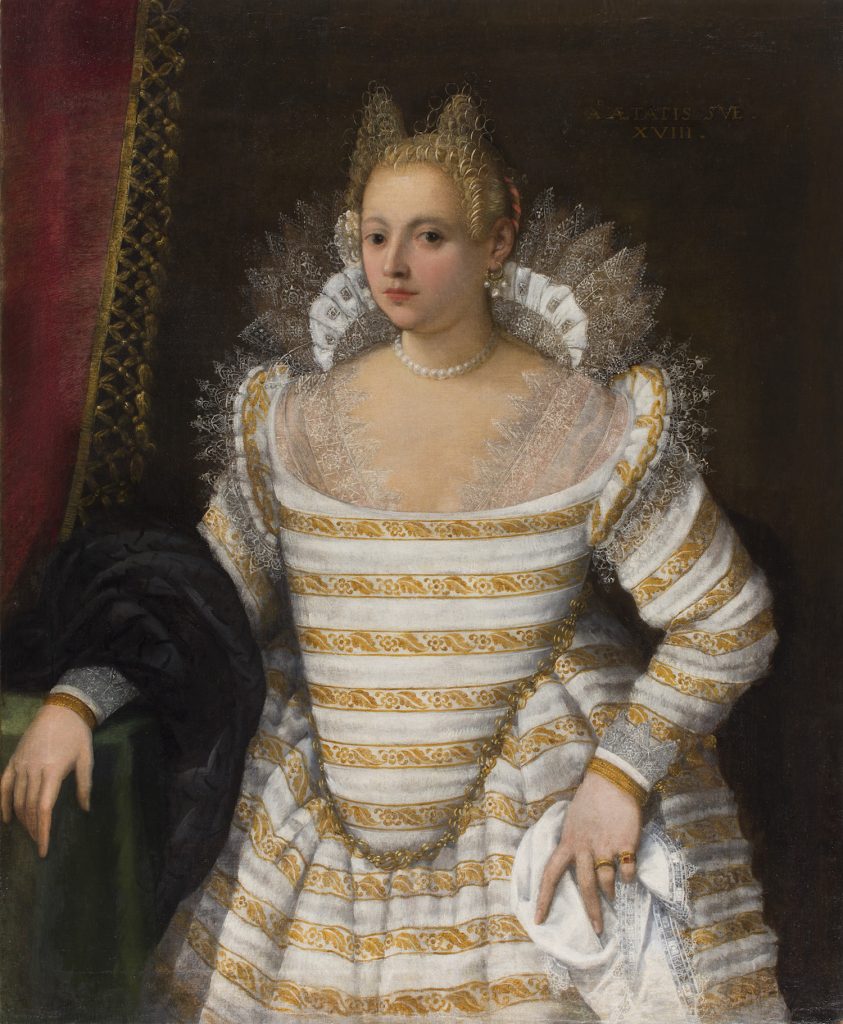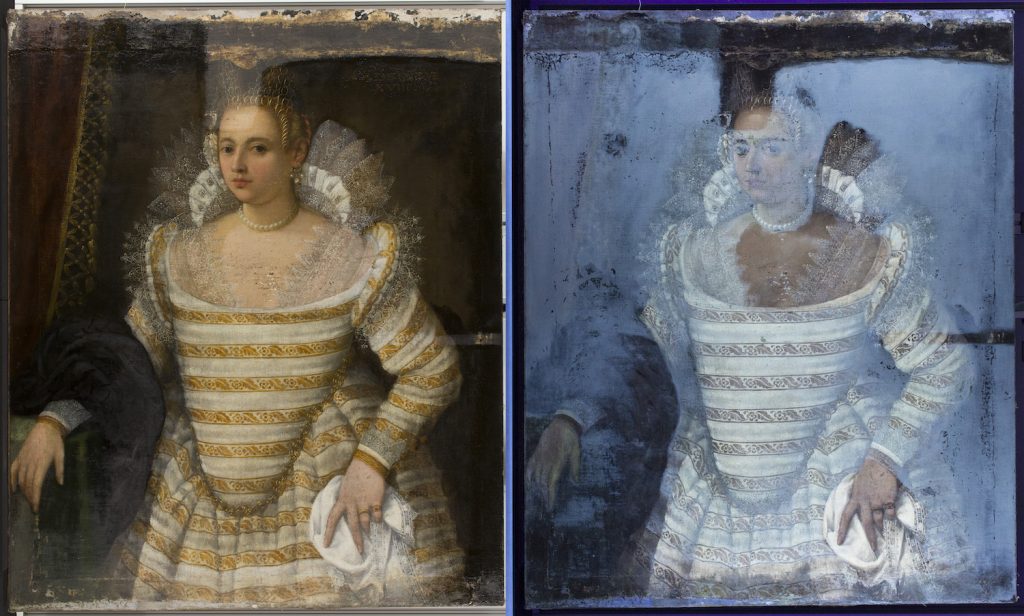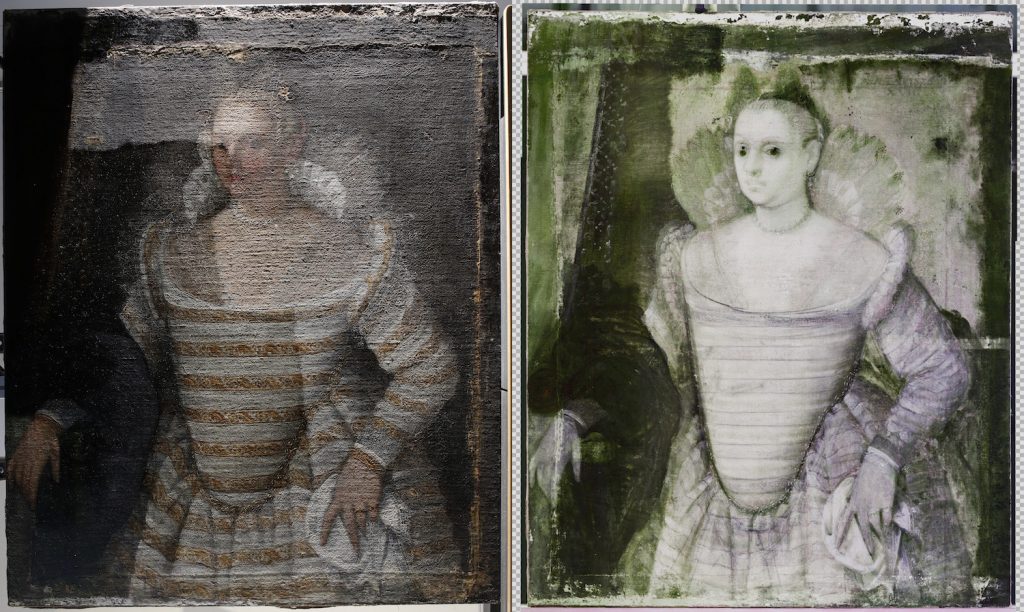Conservation of a Renaissance portrait attributed to Giovanni Antonio Fasolo
APRIL 2018
The collection of Gösta Serlachius Fine Arts Foundation includes a portrait, attributed to Giovanni Antonio Fasolo (1530-1572), of a young Venetian noblewoman. It was decided to perform the conservation of the painting, because the varnish layer was yellowed and dirty, and the paint layer was flaking in places. The painting has been subject to a loan ban and, moreover, it has not been possible for many years to display the work in the art museum’s own exhibitions.
I was assigned the task of conserving the work primarily because the painting was already familiar to me. The painting was studied in the late 1980s/early 1990s as part of a research project on Italian Renaissance art in Finnish collections. In addition to conservation, an opportunity was presented to continue the art historical research of the painting.
Based on an annotation, we know the woman is 18 years old, but no other information about the person has survived. At one time, the woman depicted was thought to be the artist’s daughter Isabella and the painting to be a wedding portrait. Isabella married in 1572, the same year her father died by accident after falling from scaffolding when painting a ceiling fresco.
The painting had been part of a double portrait. It is assumed that there was a man’s portrait on the left. The man’s hand and the woman’s palm on his shoulder have been covered and replaced by the woman’s right hand. In connection with the conservation, it was decided to preserve the present composition of the painting.
The condition of the painting was documented, both photographically and in written form. A structural analysis of the painting had been made in connection with the research project on Italian art. Now this material was also utilised. It was found that the painting had been extended at the top and on both sides, and the resulting ensemble attached to a new lining canvas.
Further studies were carried out in cooperation with the Recenart Research Centre for Art: a hyperspectral image was taken of the painting, and XRF measurements made of the pigments. The results confirmed and clarified previously known information about the structure of the painting. The gold decorations on the model’s wedding dress are pure gold leaf. The eyes of the model had previously been slightly upward looking. The under drawings of the dress area were more clearly revealed. The change of composition on the left (new hand) could not have been done before the 19th century at the earliest. The paint of the extension strip might have been applied earlier.
According to the conservation plan, the work began with a condition report and photographic documentation. Actual conservation started with the removal of surface dirt. The yellowed varnish was removed next. In connection with this, the flaking paint layer was consolidated in places. From the altered composition area on the left, the varnish layer was only thinned. A worn paint area in the upper part of the painting had been covered with dark brown paint. This was removed as far as possible from a fragile area.
On the upper left, in the curtain area, deep dark-red translucent paint was revealed below the covering over paint. Most of the colour had faded, however. The extension strip added to the left had been partly painted red, and it was possible to utilise this when restoring the curtain area. In the edge areas, a number of putty layers of differing quality had been used in connecting the strips to the actual painting. They covered a centimetres-wide area of the original paint layer and were severely cracked and uneven. The putty layers were removed and the areas cleaned. After the removal of the varnish layer, the painting was photographed in visible light and under a UV source in order to confirm the evenness of the cleaning.
A first thin protective varnish layer was applied to the painting. A softer filling than before was applied to the edge-area junctions (joints) and all of the areas deficient in paint, to ensure the joints were flexible and did not crack. The inpainting was performed with watercolours and layers of varnish added.
It is now possible to bring the conservated painting before the general public once again. The riddle of the author of the Renaissance painting has not yet been resolved, however; the artist who painted the work is likely to have belonged to the circle of Paolo Veronese (1528-1588), to which Fasolo also belonged. The issue of the identity of the model is also still open. The art historical research continues.
Maija Santala
Conservator




